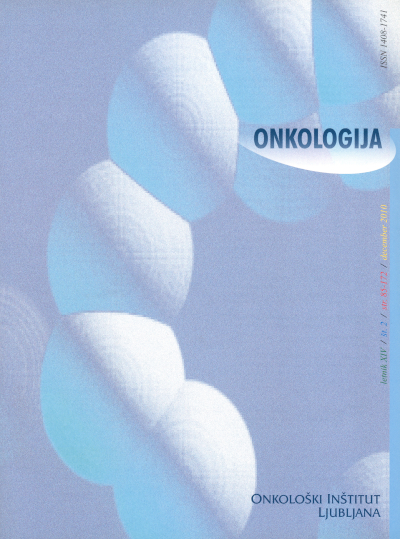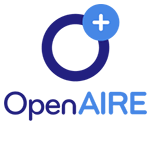Obsevanje bolnic z eno do tremi pozitivnimi pazdušnimi bezgavkami po mastektomiji - da ali ne
Patients with one to three positive axillary lymph nodes following mastectomy
dilemma whether to use postoperative radiation therapy or not
Keywords:
axillary lymph nodes, mastectomy, radiation therapyAbstract
Obsevanje po modificirani radikalni mastektomiji (MRM) pri bolnicah z 1-3 pozitivnimi pazdušnimi bezgavkami je že vrsto let predmet strokovnih razprav. Kljub čedalje pogostejšim dokazom o dobrobiti obsevanja po MRM pri bolnicah s t. i. vmesnim tveganjem za lokalno ponovitev pa še vedno ostajajo številna protislovja in nerešena vprašanja o pomenu učinka izboljšane lokalne kontrole na preživetje, o posledicah pozne kardiotoksičnosti obsevanja ob uporabi sodobnih sistemskih zdravil ter o izbiri območja obsevanja in podskupin bolnic, primernih za obsevanje. Večina mednarodnih smernic in sporazumov svetuje obsevanje po MRM v podskupinah bolnic z 1-3 pozitivnimi pazdušnimi bezgavkami, s tehtnim premislekom med koristjo in tveganjem tega zdravljenja.Abstract (Eng)
Radiation therapy following a modified radical mastectomy (MRM) applied in the patients with one to three positive axillary lymph nodes has long been a primary issue of many debates. Despite most convincing evidence of the benefits of the post-MRM radiation therapy of the patients at moderate risk for local recurrence, a number of issues and questions, such the effect of improved local control on survival as well as the late cardiotoxic sequelae of radiation therapy irrespective of the most up-to-date systemic therapy, accurate radiation field planning and proper selection of subgroups of patients eligible for radiation, have remained unresolved. In general, the majority of international guidelines and agreements recommend, though not without a careful benefit/risk assessment, performing post-MRM radiation therapy in the subgroup of patients with one to three positive axillary lymph nodes.Downloads
Published
How to Cite
Issue
Section
License
The journal is published under the terms of the Creative Commons Attribution License CC-BY 4.0. The authors retain the copyright to their work without any restrictions whatsoever.
This journal is an open-access journal, meaning that all of its contents are freely accessible without any charge to the user or their institution. In accordance with the Budapest Open Access Initiative (BOAI) definition of open access, users are allowed to read, download, copy, distribute, print, search, or link to the full texts of the articles, or use them for any other lawful purpose, without asking for prior permission from the publisher or the author, provided the authors and the journal are appropriately credited.











